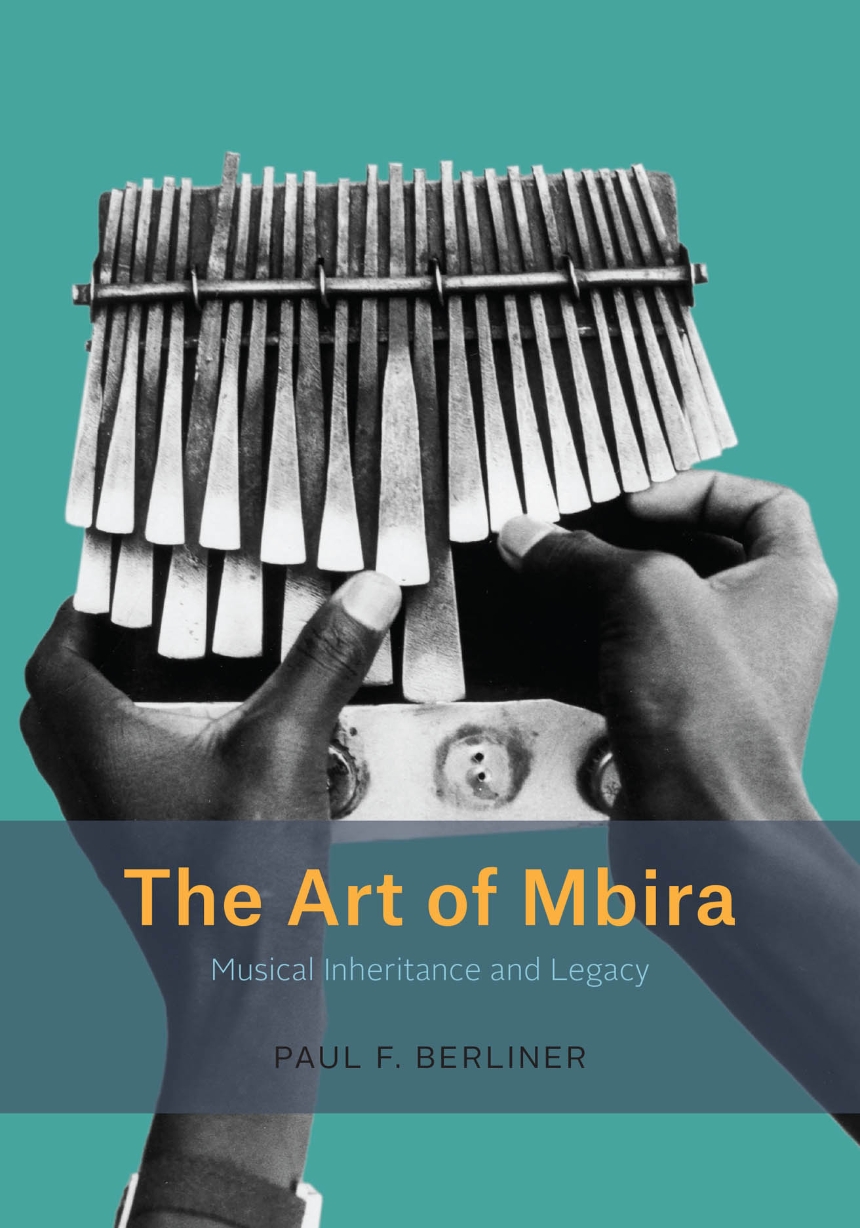The Art of Mbira
Musical Inheritance and Legacy
Growing out of the collaborative research of an American ethnomusicologist and Zimbabwean musician, Paul F. Berliner’s The Art of Mbira documents the repertory for a keyboard instrument known generally as mbira. At the heart of this work lies the analysis of the improvisatory processes that propel mbira music’s magnificent creativity.
In this book, Berliner provides insight into the communities of study, performance, and worship that surround mbira. He chronicles how master player Cosmas Magaya and his associates have developed their repertory and practices over more than four decades, shaped by musical interaction, social and political dynamics in Zimbabwe, and the global economy of the music industry. At once a detailed exposition of the music’s forms and practices, it is also an indispensable historical and cultural guide to mbira in a changing world.
Together with Berliner and Magaya's compendium of mbira compositions, Mbira’s Restless Dance, The Art of Mbira breaks new ground in the depth and specificity of its exploration of an African musical tradition, and in the entwining of the authors’ collaborative voices. It is a testament to the powerful relationship between music and social life—and the rewards of lifelong musical study, performance, and friendship.
In this book, Berliner provides insight into the communities of study, performance, and worship that surround mbira. He chronicles how master player Cosmas Magaya and his associates have developed their repertory and practices over more than four decades, shaped by musical interaction, social and political dynamics in Zimbabwe, and the global economy of the music industry. At once a detailed exposition of the music’s forms and practices, it is also an indispensable historical and cultural guide to mbira in a changing world.
Together with Berliner and Magaya's compendium of mbira compositions, Mbira’s Restless Dance, The Art of Mbira breaks new ground in the depth and specificity of its exploration of an African musical tradition, and in the entwining of the authors’ collaborative voices. It is a testament to the powerful relationship between music and social life—and the rewards of lifelong musical study, performance, and friendship.
608 pages | 302 musical examples | 7 x 10 | © 2020
Chicago Studies in Ethnomusicology
Music: Ethnomusicology, General Music
Reviews
Table of Contents
Preface
Introduction
Part A Components of the Mbira System
1 Collecting Ideas in an Improvisation-Based Tradition: A Longitudinal Approach
2 The Mbira Repertory: Central Concepts
3 Representing Mbira Music in Notation
4 Sounds Ringing in My Head: Mbira Parts’ Designs
5 Hand Dance: Keyboard Polyphony and Polyrhythmic Templates
6 In the Shadows of the Imagination: Harmonic Motion
7 Composed Variations
8 Variation Techniques
9 The Fluidity of Perception in Performance
10 The Interlocking Aesthetic: Kushaura-Kutsinhira Combinations
Part B A Biography of Knowledge: The Cultivation of Cosmas Magaya’s Personal Style
11 The Acquisition of Repertory, and Its Associations
12 The Path from Re-creation to Invention
13 Musical Arrangements: The Systemization of Aural Preferences
14 Musical Influences: Incorporation and Modification of Others’ Styles
Part C The Application of Knowledge in Performances
15 Improvisation and the Individual Mbira Player
16 Narrative Tours of the Magayas’ Individual Kushaura and Kutsinhira Nhemamusasa Performances
17 Narrative Tour of Kunaka’s Solo Nhimutimu Performance
18 Comparative Analysis of Individual Players’ Nhemamusasa and Nhimutimu Performances
19 Improvisation and Kushaura-Kutsinhira Interplay
20 Narrative Tours of the Magayas’ Kushaura-Kutsinhira Interplay in Nhemamusasa Performances
21 Comparative Analysis of Collective Resources and Creative Processes in Nhemamusasa Performances
22 Social-Musical Relations in Improvisation: Performing at a Bira
23 Conclusion
Part D Music Texts
Acknowledgments
Notes
References
Filmography/TV Programs/Videography
Index
